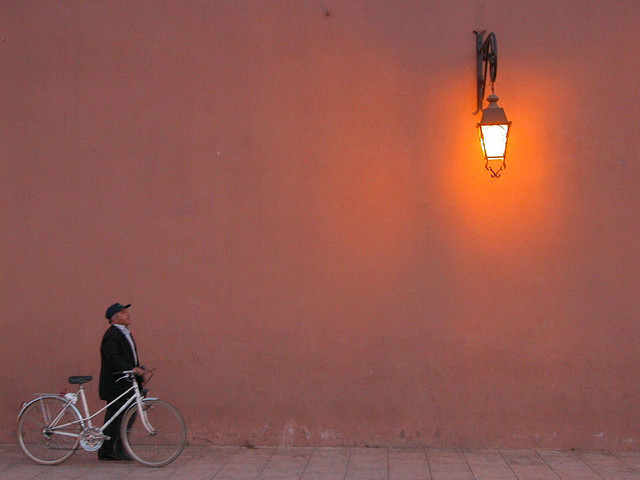When you think of Bali, chances are you envision clear blue skies, white sand beaches, thundering surf and beach-side massages. You might picture thick jungle, vivid green rice paddies, and towering volcanoes. These scenes very much exist in Bali and are the reason I was terribly excited to spend a week in this island paradise.
I expected outstanding seafood, friendly locals, budget friendly accommodation, and a pumping nightlife scene in Kuta.
One thing I didn’t expect was an afternoon spent at a traditional cock fight in the middle of the dense, muggy, and intensely green jungle.
One evening in Lovina, a series of seaside villages in the north of Bali, I met a local who was working at a beach-side bar and restaurant. I was enjoying a few Bintangs (Bali’s beer) along with some Canadian backpackers I had recently met when Putu invited me to a cockfight the next afternoon.
Needless to say, this isn’t an invitation I often get.
Cockfighting plays a very important role in the life of many Balinese men. A cockfight, in the simplest sense, is a fight between two roosters in a caged ring. To many men in Bali, it’s much more than this – it’s an obsession that has been passed down through the generations.

Cockfightinging is illegal in Bali and has been since 1981. The only exception is when a cockfight takes place for religious purposes. Bali is an intensely spiritual island made up of almost all Hindus; in Balinese Hinduism, the spilled blood in a cockfight is believed to expel evil spirits.
Although it is illegal, cockfighting takes place throughout Bali. Men will spend anywhere from six months to two years preparing roosters for a cockfight. They are fed high quality food so they develop muscle – the stronger the rooster, the better its chances of winning the cockfight. Cockfighting is so pervasive in Bali culture that you’ll often see men of all ages sitting around, grooming their roosters, comparing weights and sizes, and showing them off to other men in the community.
It’s a very big part of the local culture – and although inhumane by most standards – I couldn’t bring myself to turn down the invitation.
I met Putu the next day and he took me twenty minutes outside of Lovina to his home. Outside this traditional, one-room house, Putu had bamboo cages of roosters of different ages. Though their was a significant language barrier between us, the pride he had in his roosters was overwhelmingly apparent. He pulled out one of the roosters who he assured me was strong, well-fed, and could win in the cockfight.
75,000 Indonesian Rupiahs later (about $8 USD) and I was the proud owner of a two year old Balinese rooster.
We took our scooters higher up the mountain before turning off the small, single tracked road and onto a muddy dirt trail. We went deeper into the muggy jungle before arriving to the cockpit. There were already dozens of men preparing for the fights; as many of them chain smoked sweet-smelling clove cigarettes, they were preening their roosters and seeking out opponents.

The roosters have a natural aggression towards other males. The first step in the process is seeing which roosters want to fight. After finding a suitable opponent, a third man attaches the taji to each rooster’s leg. The taji is a razor sharp dagger of about four inches – it’s a sacred weapon and the fights are won or lost based on the use of the taji, not necessarily by the pecking that takes place between the roosters.
Before the fight begins, there is a chaotic couple minutes while the men around the cockpit place their bets. They shout out the color of the cock they want to win and were placing bets between 50,000 and 1,000,000 Rupiah. The two birds are released in the center of the ring and jump at each other, peck at each other, before one finally slashes the other rooster with the taji.

It was a quick, somewhat anticlimactic finish to all of the pre-fight negotiations. Those who lost their bets gave their cash to the organizer of the cockfight before another round started.
And what about the loosing cock? The owner of the winning cock gets the body of the looser. Unfortunately, my rooster lost and would have likely then been used to prepare Ayam Pelalah – a spicy, Balinese chicken soup.
After the cockfight I was invited to Pulu’s traditional home. He introduced me to his wife and his young daughter before serving me an outstanding lunch.

Their kitchen was outside in a bamboo enclosed room and their stove was a coal fire. As I’ve found many times in Southeast Asia, it’s amazing how those who seemingly have nothing are so giving. They made sure I had seconds, offered me tea, and gave me a gift of a polished seashell.
It was certainly an interesting afternoon – one I’m very glad I was able to experience.
What is your take? Have you been to a cockfight? Would you go? I’d love to hear your thoughts in the comments section below.














 Backpacking Matt
Backpacking Matt 



